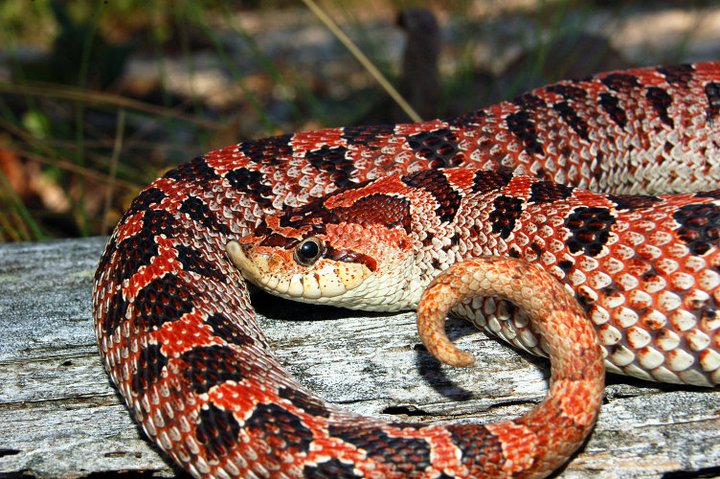Predicting Extinction Risk:
The Importance of Life History and Demography
By Claire Asher, on 28 July 2014
The changing climate is no longer simply a concern for the future, it is a reality. Understanding how the biodiversity that we share our planet with will respond to climate change is a key step in developing long-term strategies to conserve it. Recent research by UCL CBER’s Dr Richard Pearson identifies the key characteristics that are likely to influence extinction risk due to climate change, and shows that existing conservation indicators such as the IUCN red list may contain the data necessary to make these predictions.
Human activities have been negatively impacting biodiversity for centuries, and conservationists have developed a number of different indicator lists which attempt to classify species’ extinction risk. However, these lists were created to measure human impacts such as as habitat loss, hunting and introduction of invasive species. These impacts will continue to be a major issue for biodiversity, but may be dwarfed in the future as climate change takes hold. Can the indices and data we already have be used to predict extinction risk from climate change? Or does climate change represent a new type of threat, needing new indices?
 Studies have previously identified the ecological and biological traits that are characteristic of threatened or declining species. However, it is not clear how well these traits predict the future risk of climate-induced extinction. In February this year, GEE’s Dr Richard Pearson, in collaboration with colleagues at the American Museum of Natural History, Stony Brook University and the University of Adelaide,
Studies have previously identified the ecological and biological traits that are characteristic of threatened or declining species. However, it is not clear how well these traits predict the future risk of climate-induced extinction. In February this year, GEE’s Dr Richard Pearson, in collaboration with colleagues at the American Museum of Natural History, Stony Brook University and the University of Adelaide,  published a paper in Nature which attempted to address these questions. Most studies that have considered the impact of climate change on species’ extinctions have attempted to predict changes in the distribution of suitable habitats and measure extinction risk in terms of whether the species is likely to be able to find habitat to live in. However, such studies rarely consider how a species’ traits such as life history and spatial characteristics will influence their ability to persist through changes in climate. In this study, Pearson and colleagues coupled ecological niche models with demographic models, and developed a generic life history method to estimate extinction risk over the coming century.
published a paper in Nature which attempted to address these questions. Most studies that have considered the impact of climate change on species’ extinctions have attempted to predict changes in the distribution of suitable habitats and measure extinction risk in terms of whether the species is likely to be able to find habitat to live in. However, such studies rarely consider how a species’ traits such as life history and spatial characteristics will influence their ability to persist through changes in climate. In this study, Pearson and colleagues coupled ecological niche models with demographic models, and developed a generic life history method to estimate extinction risk over the coming century.
Modelling Extinction
The authors then tested their models on ecological and spatial traits for 36 reptile and amphibian species in the USA. Using commonly available life history variables, they found that their models could accurately predict extinction risk between 2000 and 2010. They then utilised the same traits and models to predict future extinction risk under two climate models – a high emissions scenario and a policy scenario aimed at curbing emissions. Average extinction risk for the 36 species studied was 28% under the high emissions scenario, dropping to 23% under strict policy intervention. This seems like a very small difference for a significant intervention – it’s important to note that the same estimates indicated an average extinction risk of just 1% in the absence of any climate change at all.
 One of the most important determinants of extinction risk in reptiles and amphibians was occupied area, which represents the range of climatic and habitat conditions the species can survive in. Species with a larger occupied area tended to be more robust to climate change, presumably because they are already adapted to a wider range of habitats and climates. Other key variables influencing extinction risk include population size and generation length.
One of the most important determinants of extinction risk in reptiles and amphibians was occupied area, which represents the range of climatic and habitat conditions the species can survive in. Species with a larger occupied area tended to be more robust to climate change, presumably because they are already adapted to a wider range of habitats and climates. Other key variables influencing extinction risk include population size and generation length.  In many cases, traits interacted to determine species risk, for example extinction risk was strongly influenced by interactions between occupied area and generation length. Including many different traits can therefore greatly improve the accuracy of predictions. Recent trends tended to be less informative than spatial, demographic and life history traits, particularly under the high emissions scenario, suggesting that the impacts of climate change we have observed so far are likely to become less and less relevant as climate change accelerates.
In many cases, traits interacted to determine species risk, for example extinction risk was strongly influenced by interactions between occupied area and generation length. Including many different traits can therefore greatly improve the accuracy of predictions. Recent trends tended to be less informative than spatial, demographic and life history traits, particularly under the high emissions scenario, suggesting that the impacts of climate change we have observed so far are likely to become less and less relevant as climate change accelerates.
The majority of variables that showed a significant impact on extinction risk are already included in major conservation assessments and indices, meaning that data and monitoring programs already in place may be better at predicting extinction risk under climate change than we might have expected. Climate change may not be fundamentally different from other human threats such as habitat loss and hunting, at least in terms of our ability to assess extinction risk. Conservation initiatives should focus on species who currently occupy a small and declining area and have a small population size. Regardless of the policy future, conservation actions will need to consider and account for climate change if they are to prove effective.
Original Article:
This research was made possible by funding from the National Aeronautics and Space Administration (NASA) and the Australian Research Council
One Response to “Predicting Extinction Risk:
The Importance of Life History and Demography”
- 1
 Close
Close




[…] Predicting Extinction Risk:The Importance of Life History and Demography […]